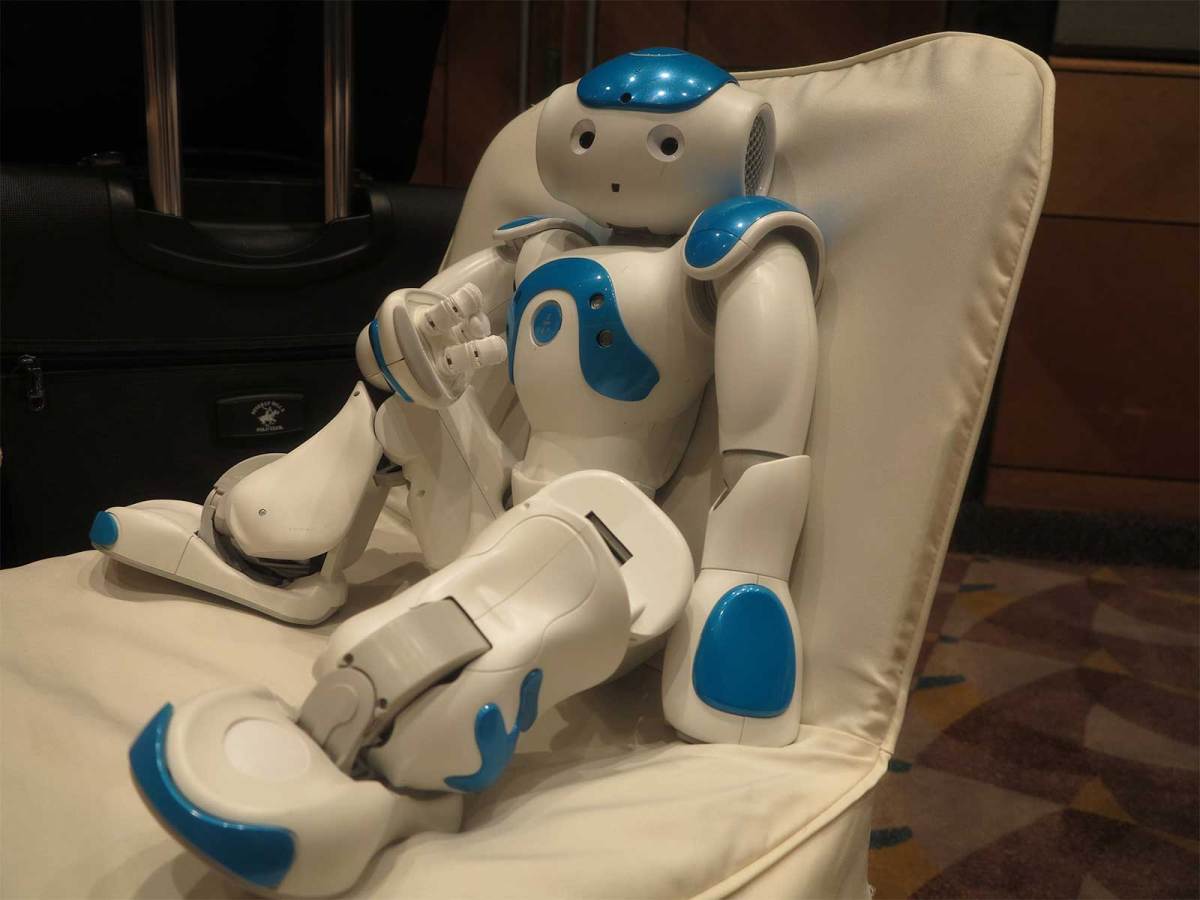Hong Kong
As production costs continue to fall, while technology advances in leaps and bounds, the past decade has seen robotics grow from the domain of university research to a massive global industry. And while basic robotics are now employed in almost every major factory in the world, it is the field of semi-autonomous robotics (often called drones) that has the potential to not just increase safety and efficiency but majorly influence the way business is conducted worldwide.
While at the Hong Kong Electronics Fair & ICT Expo, Appliance Retailer had the chance to catch up with three industry experts in the field of robotics, and their latest projects, to discuss the ever growing demand for commercial drones and the ways they will change the face of industry forever.
Name: Dr Ray Cheung
Company: City University of Hong Kong- Department of Electronic Engineering (CityU Apps Lab)
Robot: Nao
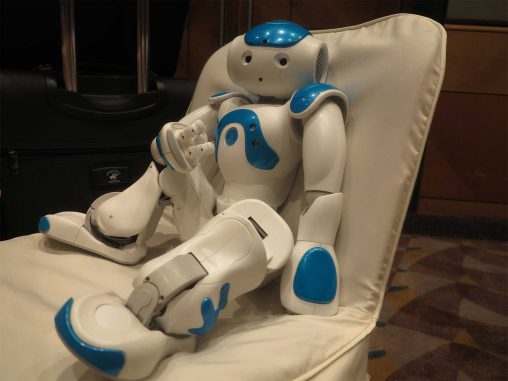
Standing less than 60 centimetres tall, and featuring colourful plastic armour and glowing eyes, one could be forgiven for believing Nao is nothing but a children’s toy. But behind his plastic shine lies an incredible talent: This Nao is an incredible mimic.
“Our Nao is able to recognise different people standing in front of him, and their body movements. Once he focuses he is able to copy those movements and perform them at the same time,” Dr Ray Cheung, assistant professor at the City University of Hong Kong and supervisor of the CityU Apps Lab, told Appliance Retailer earlier this week. “He is also then able to copy those actions later without help.” In essence, Nao is learning.
By pressing a button on top of his head and then making him perform an action (whether he is following along or being physically guided), Nao is able to incorporate the movements into his code and then perform them on demand by simply asking him to.
Because of this ability to record and recall, Nao is now able to wave, draw, walk and (in the case of the model on display at this year’s fair), box. He is able to move and operate on his own to a certain extent, following commands given to him via voice or a simple smart phone app. Nao can walk without falling, but if he does he is able to get back on his feet in a matter of seconds.
Click here to sign up for our free daily newsletter
However the real magic happens when a human is put behind the controls. Using a Microsoft Kinect sensor to track human movement, Nao can accurately mirror upper body movements with little to no delay between man and machine. As a person moves, so too does Nao.
Though Nao is still in an infant stage, and needs to either remain within a dedicated Wi-Fi zone or tethered to a computer via cable, Cheung says that the little robot’s unique way of learning has the potential to impact business in a big way. “Once taught, robots like Nao could move about a factory unaided, not fixed to one place. If they found something they didn’t know how to do they could simply be taught by watching.”
The technology within Nao is also scalable. In the future walking robots much larger and more complex could be taught to work in construction, or simply take advantage of their mirror mode by letting a human work through the robot, allowing them to complete tasks much too strenuous for a human to handle.
Name: Peter Spesivtsev
Company: Rbot
Robot: Synergy Swan
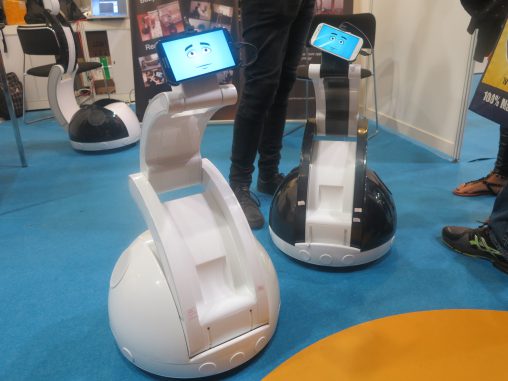
Much like Nao, the Synergy Swan attempts to copy humans to some extent. However, while Nao is able to mimic human movement, the Synergy Swan is attempting to replicate something much more difficult to comprehend: how to hold a conversation. “What [the Synergy Swan] is able to do is recognise different people, tell them apart as individuals, and is then able remember as many details about that person as it can,” said Peter Spesivtsev, international sales director of Rbot.
But the main charm of the Synergy Swan is not that it can remember people and regurgitate information, but that it is able to do so while tricking you into believing that it, too, is human. It accomplishes this with its unique body shape and visual display. The main body resembles a large robotic vacuum cleaner. On top of the chassis is a long hinged arm, at the end of which rests cradle for holding a smart phone or tablet.
Once the right software has been downloaded, the selected device is placed in the cradle and connected with a single wire. When set up, a cartoonish face appears on the screen and, using the processing power, microphone and camera of the chosen device, the Swan is then able to track and follow the movement, facial expressions and voice of anyone that it can see. The face on the screen reacts accurately to the conversation being held, while the single robotic arm is able to tilt the ‘head’ side to side or up and down, giving the impression that it is avoiding eye contact by looking at the floor when feeling guilty, or that its feeling cheeky by cocking its head to the side and grinning.
It is this ability to portray human emotions and personality that makes the Swan stand out from other members of this market. Three Swans were on display during the interview and each had a very distinct personality. One was very shy and would feel sad and lonely when it couldn’t find Peter Spesiytsey (to the length of calling for him by name, saying that it missed him) and then becoming extremely depressed when Peter didn’t pay attention. Another one was very sociable, saying hello to different people when they passed by and asking if they should take a picture together. When this journalist aimed the camera at it, it smiled happily and said ‘Cheese!’ and then thanked me by name.
The applications for this kind of robot are extensive. “You could easily place one at the entrance to a shop or the front counter of a restaurant and it would be able to interact with customers, remembering what they asked for and what they liked,” Spesiytsey told Appliance Retailer. “It can recognise voice and language as well, so if you speak to it in Spanish it will recognise that and be able to immediately speak Spanish.”
“When the technology becomes better, it could even be used as a baby sitter.” Spesiytsey also remarked that aged or invalid care would benefit from such a personalised experience.
Perhaps even more important to the design of the Swan comes from using smart phones or tablets to power their intelligence. As the personality and memory of a particular Swan is stored in the device rather than the robot itself, this means that the phone or tablet could be loaded into any compatible robot and still retain all its knowledge from its previous body. This could potentially mean that one virtual intelligence could be loaded into multiple bodies while being able to simply fit in your pocket when you are done.
Name: Brian Chacone
Company: AEE Technology Inc
Robot: Toruk AP10
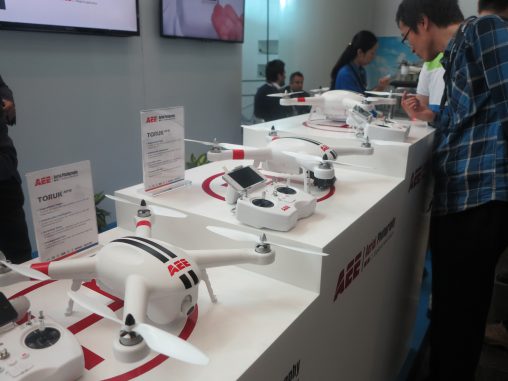
While the Unmanned Aerial Vehical (UAV) may be synonymous with the military and the infamous practice of ‘Drone Strikes’ in recent conflicts, the Toruk AP10 has been built with the best intentions in mind.
Four rotor blades, arranged around the main body, propel the AP10 through the sky nimbly and at surprisingly quick speeds. The body, while containing a number of sensors and GPS locators, also features a front facing camera that can be adjusted and moved mid-flight by the operator using a special controller, while a linked smart phone is able to stream and record live video while it is still in the air.
For a non-military drone, the AP10 has a remarkable operating range: Up to one kilometre away from its pilot in ideal conditions, both horizontally and vertically. It is also able to remember routes that it has taken previously, using in-built GPS, and then fly those paths again without having to be controlled by a pilot.
For Brian Chacone, director of sales and marketing at AEE Technologies Inc, the potential of commercial UAV’s are set to revolutionise almost every facet of society for the better. “Let’s say a policeman was chasing a bad guy through the streets at night, normally a helicopter with a spotlight would be called in. But helicopters can easily lose sight of a person on the ground. But what if you bolted a compact, high powered LED spotlight to a UAV like [the AP10]? Now the police have a solution that is more nimble, can fly closer to the ground or inside buildings and can assist in ways that a helicopter couldn’t.”
Chacone also noted that aerial drones don’t just have applications in law enforcement, but can also aid humanitarian causes. “I have heard of a doctor in Africa who is looking into how to use drones to deliver medicine or supplies to communities that he isn’t able to reach. With time, and as drones get better, drones could be used to carry heavier and heavier loads to these communities in need.”
UAV’s would also have particular relevance in remote areas or those with little infrastructure due to the fact they they run entirely on electricity. If a drone like the AP10 was able to be connected to a solar power source, entire communities would then have access to a tool that was able to bring them supplies without ever having to rely on costly and unsustainable fuel sources.
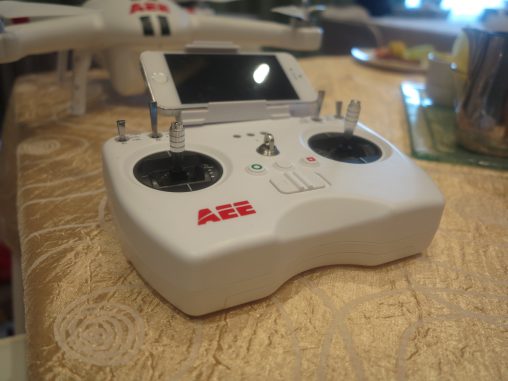
Of the three different semi-autonomous robots that Appliance Retailer was able to interact with, the UAV is perhaps the most likely to influence our lives the soonest. Drones are already being incorporated into the law enforcement arsenal and online retail giant Amazon is currently in the testing phase of creating a delivery drone fleet; one designed to be able to deliver packages directly to buyers in major population centres in a matter of minutes.
It is also worth noting that Australian textbook retailer Zookal has also expressed a similar interest in delivery drones.

